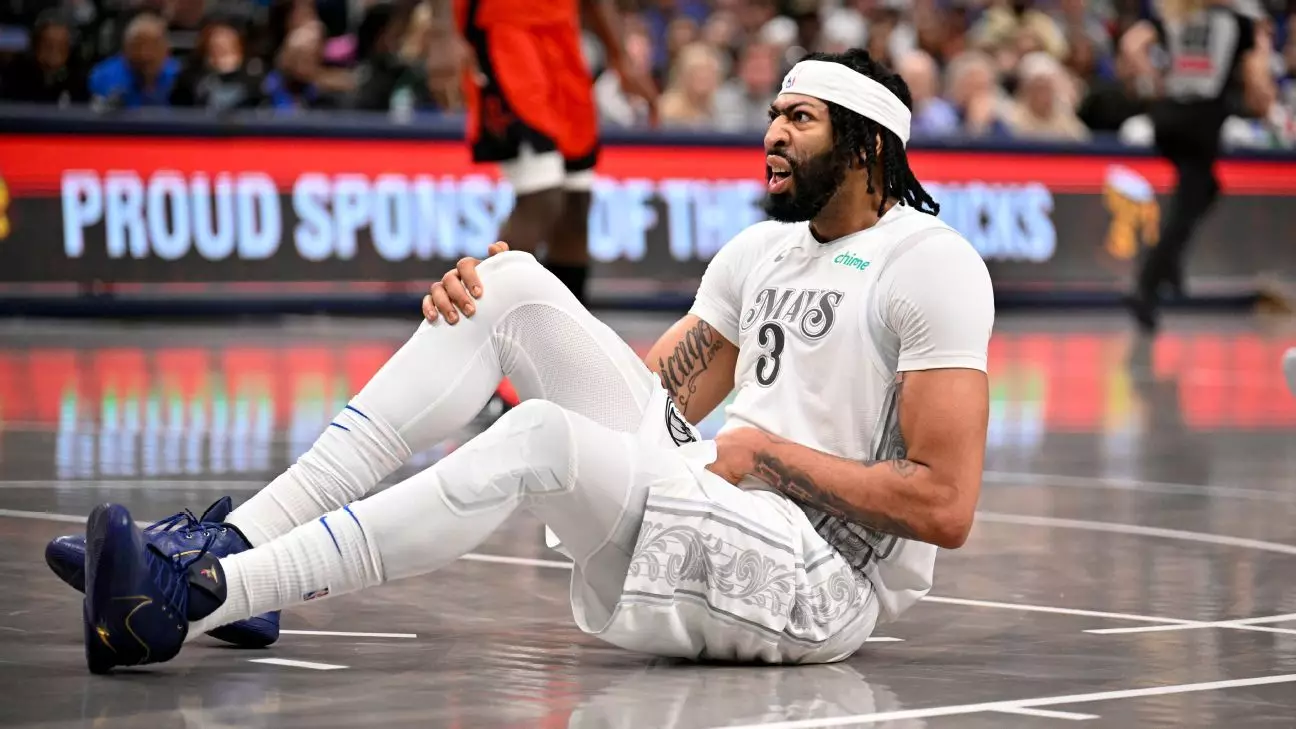Anthony Davis, in his much-anticipated debut with the Dallas Mavericks, offered a glimpse of high-caliber performance that fans hoped would redefine the team’s trajectory this season. However, the excitement was abruptly cut short when he suffered a “lower-body injury,” raising crucial questions about his impact and future with the Mavericks as they navigate the aftermath of a highly controversial trade involving star player Luka Dončić.
Davis’ Stellar Start Before the Setback
The initial moments of the game showcased Davis’ extraordinary skill set as he dominated on the court, quickly racking up impressive numbers. Within just 31 minutes, he posted 26 points, 16 rebounds, 7 assists, and 3 blocks, illustrating why the Mavericks saw him as a centerpiece in their strategic reformation. The electrifying atmosphere in the American Airlines Center was palpable; fans erupted in approval as Davis executed a series of highlight plays, like a spirited lob to center Daniel Gafford and an emphatic putback dunk that teasers his undeniable talent.
However, less than five minutes remained in the fourth quarter, and Davis departed the game after attempting to contest a driving dunk by Houston Rockets’ Alperen Sengun. This moment marked a turning point not only in the game—a 116-105 victory for Dallas—but also in the storyline of the season thus far. The incident illustrated the fragility of an athlete often considered injury-prone, igniting a lingering concern about Davis’ long-term reliability.
Davis’ injury comes on the heels of a tumultuous week for the Mavericks, marked by the contentious trade of Luka Dončić, a once-in-a-generation talent who had led the team through transformative seasons. The decision by Mavericks general manager Nico Harrison to part ways with such a cornerstone figure has incited widespread outrage among fans, culminating in a pregame protest featuring around 1,000 demonstrators. As the franchise attempts to forge a new identity, the fervent backlash raises critical questions about the team’s direction and management’s decision-making processes.
While the Mavericks managed to secure the win against the Rockets, the emotional toll of the trade along with Davis’ injury casts an uncertainty over the team. Many fans expressed their disillusionment and feeling of betrayal by waving signs and chanting through the protest outside the arena. The reality of their franchise’s future appears overshadowed by this distraction, especially with a general manager reportedly receiving threats, further complicating the emotional landscape surrounding the team.
Postgame, Davis attempted to calm the storm surrounding his health, characterizing the injury as “tightness” rather than a serious concern. He assured reporters that he doesn’t anticipate an extended absence, calling it a mere spasm in the leg. His optimistic outlook is undoubtedly what the Mavericks and their supporters crave; however, Davis’ history with injuries leaves many skeptical. Despite holding a career-high of 76 games played last season, his presence on the court remains a double-edged sword—capable of dominating a game but also susceptible to injury disruptions.
Furthermore, the Mavericks need Davis at his best for them to regain momentum and harness the capabilities he brings to their roster. The fanbase’s lingering frustrations from the Dončić trade coupled with the uncertainty of Davis’ health create an urgent need for the Mavericks to stabilize their performance and public sentiment.
As the Mavericks grapple with the immediate aftermath of Davis’ injury, understanding how to balance team dynamics, fan expectations, and player health will be crucial. The road ahead is littered with challenges—restoring faith in the franchise’s vision while ensuring that Anthony Davis can truly contribute and thrive in his role. Whether the Mavericks can turn this adversity into an opportunity for growth remains to be seen, but one thing is clear: the stakes have never been higher.


Leave a Reply